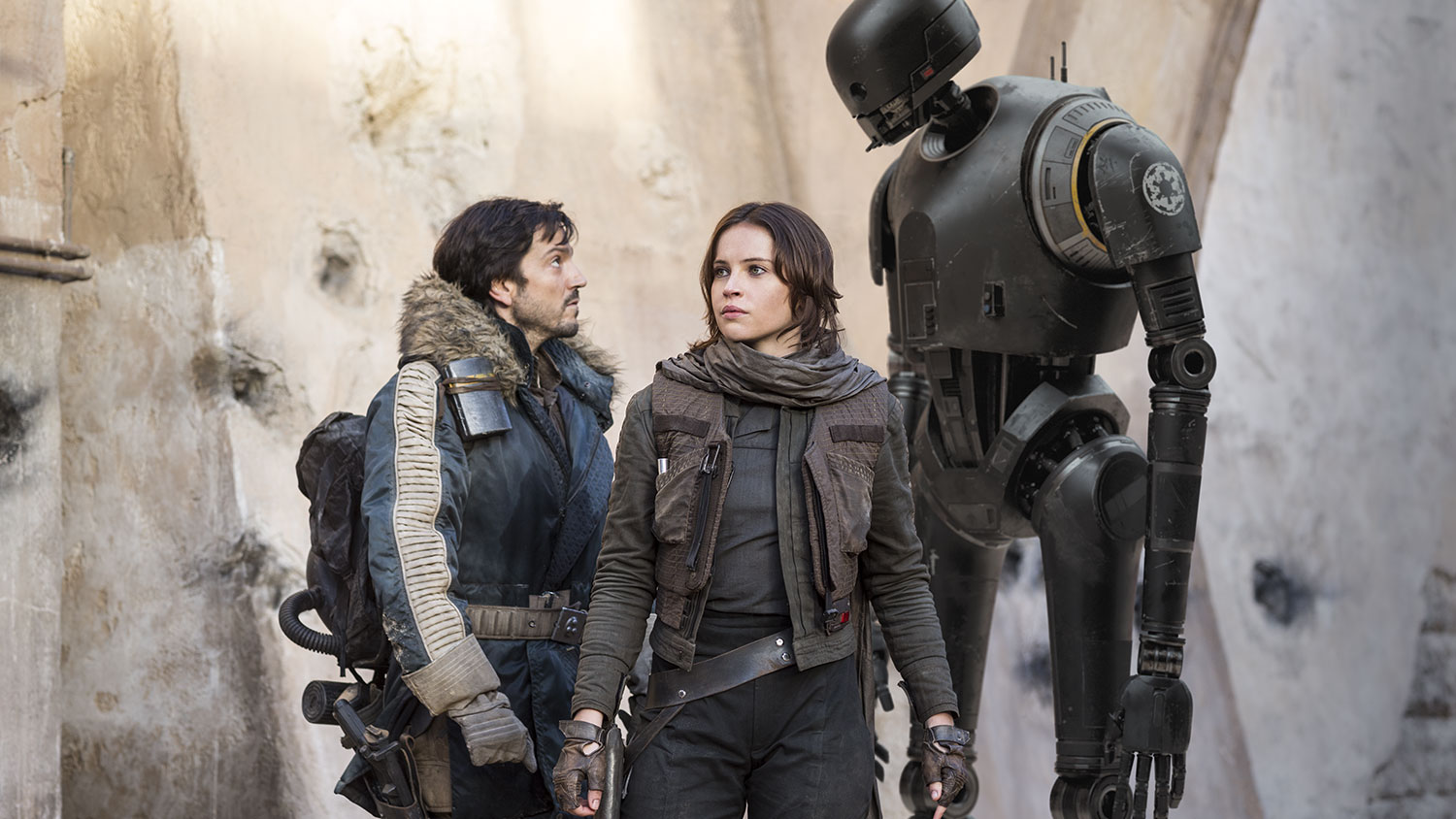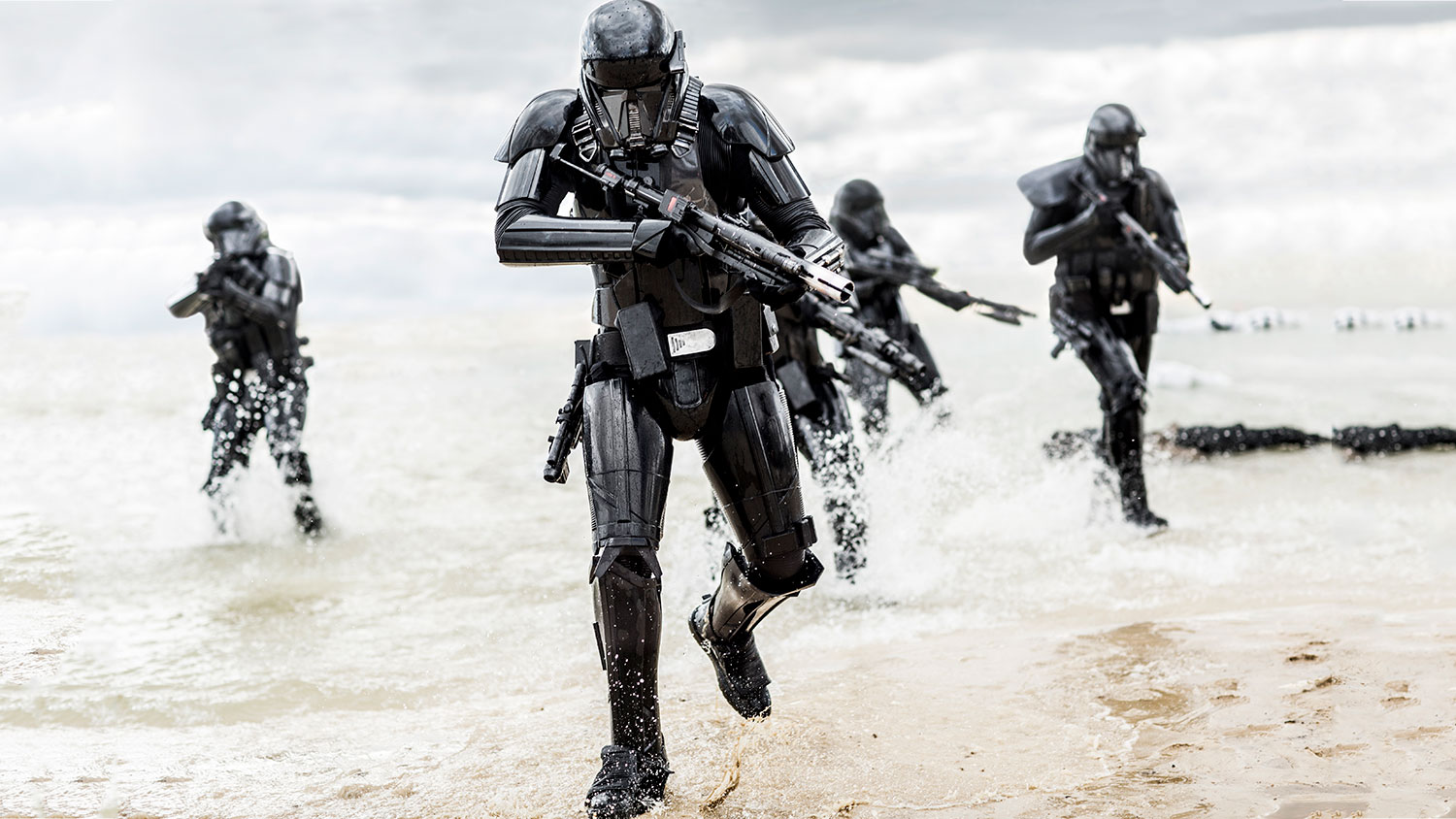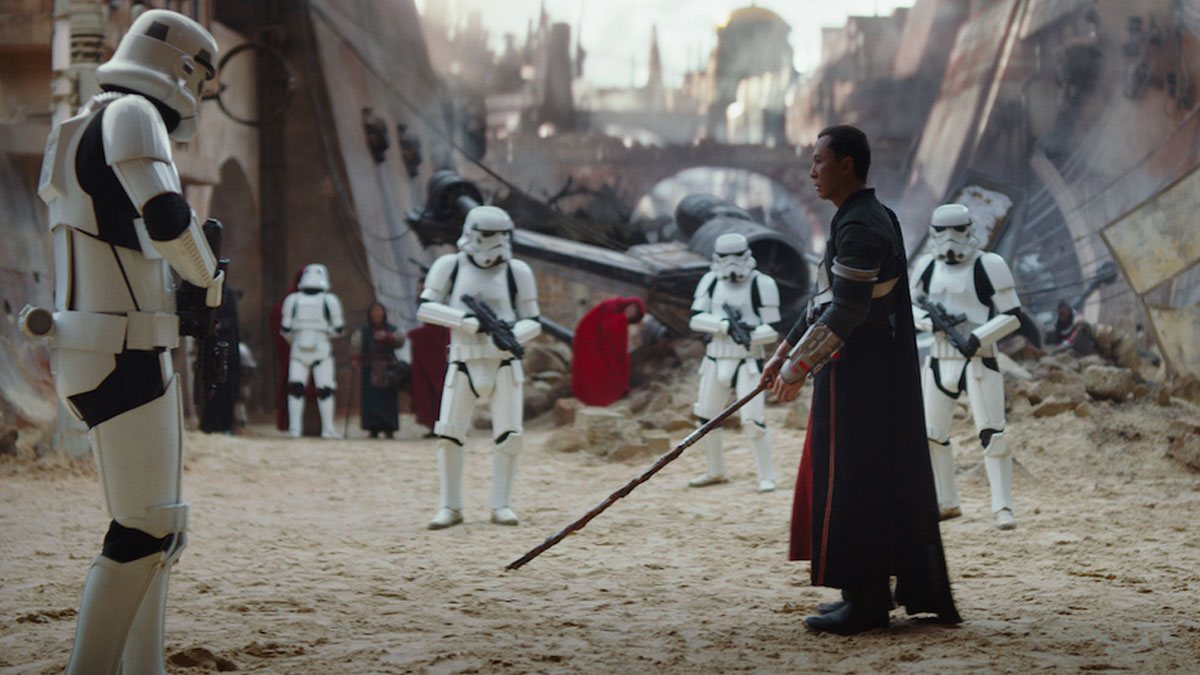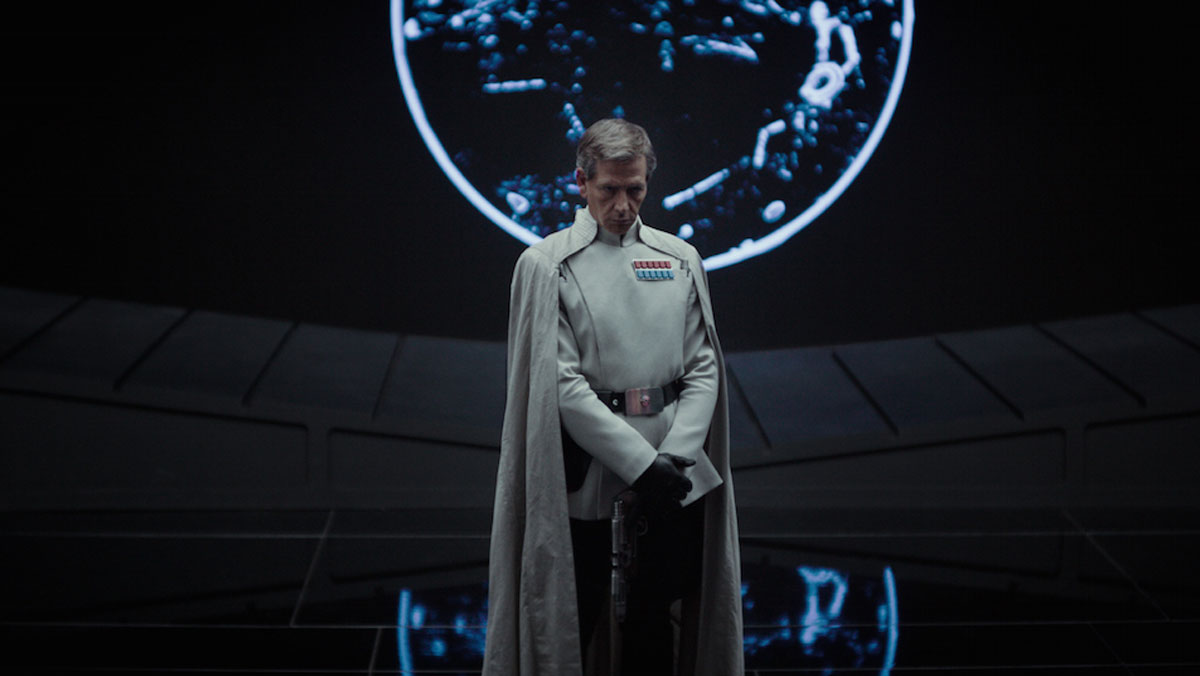By most measures, Rogue One: A Star Wars Story is a sure-fire hit with critics and at the box office. It is set in one of the most popular movie franchises of all time and has a fantastic, well-regarded director behind the camera.
And yet, beyond all of the explosions and homages, there’s a struggle going on just below the surface of the film – one as epic as the battle unfolding on the screen.
Rogue One casts Academy Award nominee Felicity Jones (The Theory of Everything) as Jyn Erso, a rebellious young woman who is recruited by the Rebel Alliance to find and retrieve her long-lost father, the designer of the original, planet-destroying Death Star. She’s accompanied on the mission by a Rebel intelligence officer played by Diego Luna (Milk) and a reprogrammed Imperial droid, K-2SO (voiced by Firefly actor Alan Tudyk), as well as a small group of colorful teammates played by Donnie Yen (Ip Man), Wen Jiang (Devils on the Doorstep), and Riz Ahmed (The Night Of).
The villainous Orson Krennic (Bloodline actor Ben Mendelsohn) opposes the ragtag team and the combined might of the Empire – which includes a certain heavy-breathing, lightsaber-wielding Sith Lord with an affinity for black helmets.
While the protagonists of the film try to throw a wrench into the diabolical plans of The Empire, the film itself grapples with its own tug-of-war playing out in front of – and behind – the camera.
The first of the Star Wars standalone films, Rogue One wavers dramatically between giving longtime fans the movie they expect to see and serving up something new from the ingredients prior films provided. Rather than going all-in on one approach or the other, however, director Gareth Edwards does an admirable job of delivering on both options, and the final product – despite a few flaws – works surprisingly well as a compromise between new and old.
Despite a few flaws, it is a good compromise between new and old.
Although its placement in the Star Wars timeline between Star Wars: Episode III – Revenge of the Sith (2005) and Star Wars: Episode IV – A New Hope (1977) doesn’t afford it the sort of star power that last year’s Episode VII – The Force Awakens had with Harrison Ford, Mark Hamill, and Carrie Fisher, Rogue One still has cameos from characters in both the original trilogy and the prequels. Edwards goes so far as to digitally add several characters (which will remain unidentified to avoid spoilers) from the original trilogy to present them the way they appeared in those films nearly 30 years ago.
It’s a gamble that pays off with one of the characters, but feels a little too artificial with the other, more prominent computer-generated cameo.
The performance of the new, human characters more than makes up for these computer-generated flaws, though, and Jones manages to hold her own as a believable – and relatable – hero who opts for action over angst. She seems well-suited for the Star Wars universe. The same can be said for each member of the film’s core cast of protagonists. They all seem to carve out interesting, unique roles in the events transpiring around them and avoid coming across as disposable allies.

In fact, if there’s one thing that Rogue One falls short on, it’s in giving its audience enough time with the intriguing supporting characters it introduces.
Yen and Jiang’s characters in particular are fascinating to watch, and the film hints at a much deeper story behind the unlikely allies’ friendship without ever seeing the arc through. The audience is also given precious little time with Forest Whitaker’s barely-there resistance leader Saw Gerrera, who’s presented as some sort of legendary soldier without the benefit of much backstory to support all the reverence we are expected to give him.
(Note: We’re aware that Saw Gerrera plays a key role in the Star Wars: Clone Wars animated series, but in the context of Rogue One, he remains a mystery.)
As the film’s primary villain, Mendelsohn channels a supremely sinister Imperial officer who shares much in common with some of the Star Wars franchise’s most memorable antagonists. It says a lot about him and his performance that he’s able to hold his own in a scene he shares with the aforementioned Sith Lord – no easy task, given his counterpart’s larger-than-life presence.
Rogue One never feels as impactful as the original trilogy.
Still, despite all of the memorable performances by franchise newcomers and the film’s cornucopia of homages to the past, Rogue One never quite feels as impactful as some of the preceding films. We come into the film knowing that its heroes and villains barely get a passing reference in the chapters that follow it, so the film’s relationship to the greater Star Wars saga feels like a one-way street.
In its efforts to establish its position within the Star Wars timeline, Rogue One also suffers from some occasionally jarring scenes that try (and either barely succeed or outright fail) to blend the high-tech, high-resolution visual effects of modern movies with the outdated, 1977 visual aesthetic of A New Hope. This problem is particularly noticeable each time the Death Star firing sequence is depicted. It suddenly feels like technology is taking a massive step backward every time the camera pans over a monitor depicting the crude, late-’70s graphics that were a hallmark of A New Hope.
However, Edwards’ knack for combining the best of the old and the new is on full display in the film’s final, climactic scene.

Without spoiling any details, the scene offers a great reminder of the sort of iconic imagery that made the original Star Wars trilogy so memorable, and showcases the sort of creative magic that a talented filmmaker can cast within that universe. That the scene ends precisely where A New Hope begins (a fact that the director and the film’s creative team revealed quite a while ago) only hammers the point home that the Star Wars franchise can be fertile ground for fascinating stories, as long as the storyteller pays heed to the roots of the saga.
Although it doesn’t approach the sheer fun of The Force Awakens, Rogue One succeeds thanks to its standalone story, but occasionally it does feel too isolated for that very same reason. It exists as a standalone story not just in concept but in its execution and general tone, in much the same way many of the “expanded universe” Star Wars novels told stories that referenced – but were rarely referenced by – the greater saga.
Rogue One never quite establishes itself as must-see material, but still does a fantastic, clever, and thoroughly entertaining job of keeping the fires burning between The Force Awakens and the still-untitled Episode VIII coming next year.
And that’s more than enough to leave us feeling like Rogue One accomplished its mission.







